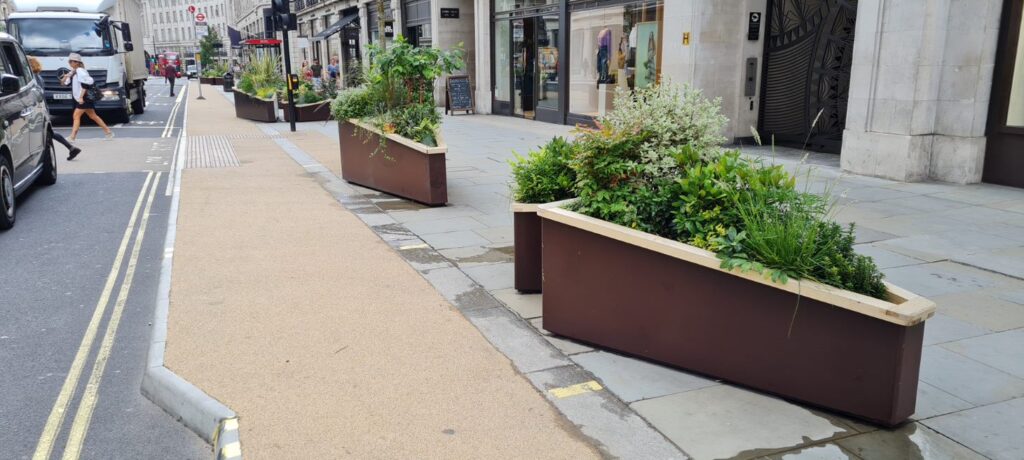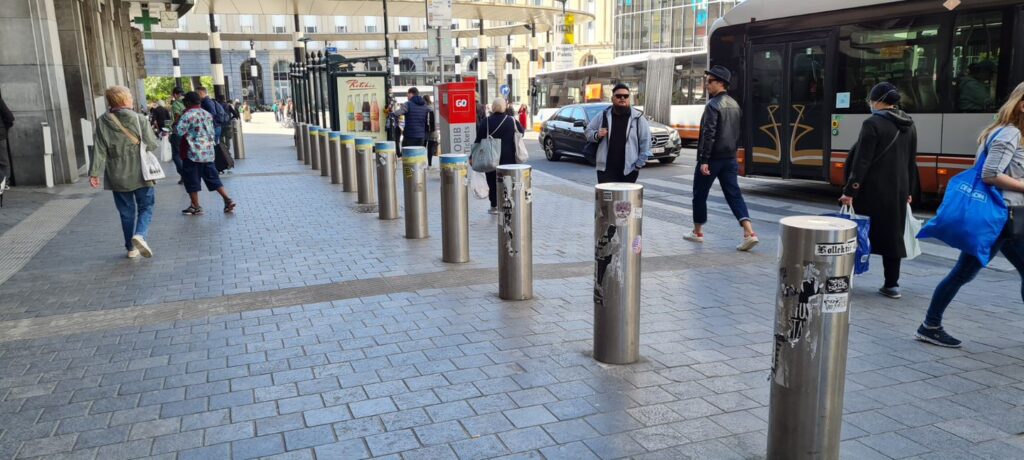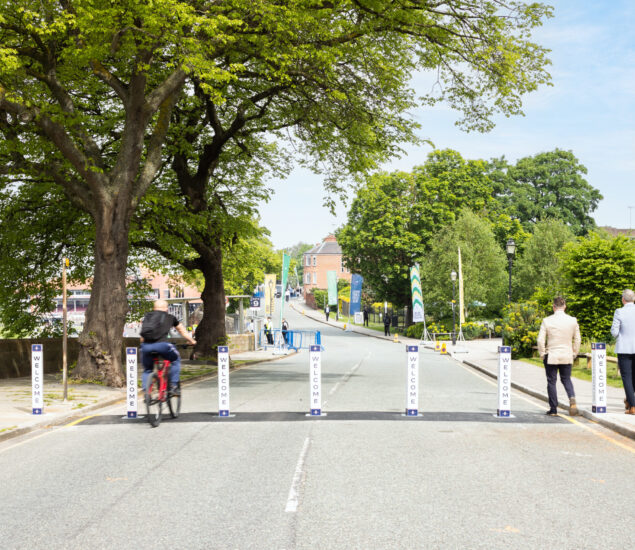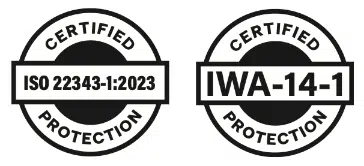Security solutions that balance protection and openness through thoughtful design that safeguards without compromising the public realm.
Integrated security is when the application of hostile vehicle mitigation (HVM) measures is holistic, ensuring that the level of protection is appropriate and doesn’t compromise the aesthetics and functionality of our cityscapes. In many cases, HVM can actually enhance these attributes.

The Challenge with Traditional Approaches
Often, security measures have been an afterthought — an extra layer added to an urban environment. Until recently, bollards, concrete blocks, and barriers have been scattered around cities as quick responses to increasing terror threats, consequently closing up our public spaces.
The Role of Design
Depending on the landscape, some solutions may be discreet, and others overt. However, every place and situation will call for a different site-specific solution.
Effective Security Design: Holistic and Layered Approaches
There are two effective approaches to security in a cityscape: holistic and layered.
A holistic approach acknowledges and responds to the interdependence of physical measures with electronic and procedural security measures to ensure that overall security is enhanced rather than compromised. Depending on the time of day or year, the level of threat in an urban space may vary. Effective security design will therefore recognise that the threat level will fluctuate and will be flexible through the use of re-deployable or contingency solutions during peak hours of crowd density or during certain events, such as Christmas markets or concerts.
Alongside a holistic approach, an effective security plan is successful when it is implemented across multiple geographic layers — a layered approach to security. When it comes to HVM measures, layers can feature access control and vehicle management on a district level, design of approach routes, further vehicle management and stand-off distances, and secure threshold design in the immediate vicinity of the asset.
Integrated HVM: Key Design Principles
- Consider forward planning and flexibility to counter developing threats
- Provide mitigation measures proportionate to the threats
- Be designed to enhance the settings
- Include multi-functional elements
- Ensure an accessible and inclusive environment
- Be designed with maintenance in mind
Equally important are the considerations carried throughout the design process to delivery on the ground. Finally, a long-term requirement of monitoring and maintaining HVM measures ensures that the measures continue to perform well as successful HVM solutions and aesthetic elements for the urban space.
This article is in part informed by Centre for the Protection of National Infrastructure’s piece on integrated and design-led security, A Public Realm Guide for Hostile Vehicle Mitigation.







